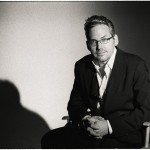
Since my childhood, I’ve been fascinated by the Native American Indian people and culture. Their spirituality speaks with all the elements of our earth, something which strongly resonates in my own beliefs and has inspired many adventures in nature. I was fortunate to have been a guest of the Mother Earth’s People Inter-Tribal Pow Wow […]





David Savinski - I am DYING to go to Australia!December 19, 2012 – 2:53 pm
Sunder Devi - I just love your work..How about coming to Australia?November 25, 2012 – 3:28 am
David Savinski - I will say it’s very difficult to shoot with the Contax but the results are worth it. The process slows you way down (which isn’t a bad thing). Any camera system in any capable hands will produce excellent results. Of course what the image says will be vastly different depending on who’s holding the camera.June 9, 2012 – 6:36 pm
David Savinski - Thanks, Andrea! It’s interesting but I now think of myself as an art-historian.June 9, 2012 – 6:35 pm
David Savinski - I will say it’s very difficult to shoot with the Contax but the results are worth it. The process slows you way down (which isn’t a bad thing). Of course any camera system in any capable hands will produce excellent results.June 9, 2012 – 6:32 pm
Eric Daigle - Wow David, I love it! Awesome work. Contax 645 is a great camera.June 9, 2012 – 2:07 am
Andrea Reeves Beebe - LOVE the photos! You are performing a wonderful service but capturing these images for generations to come. Please keep up the wonderful work- they are a gift.June 8, 2012 – 8:19 pm
Glen Baker - Great photos!June 8, 2012 – 8:03 pm